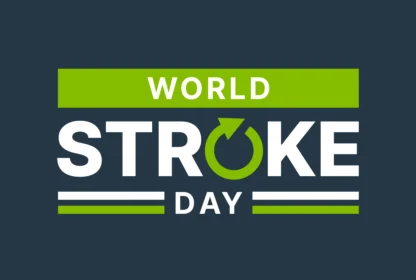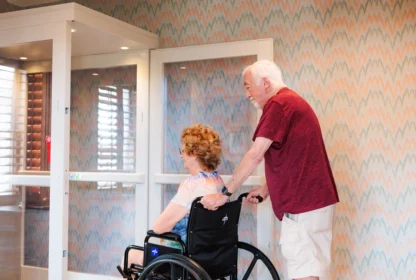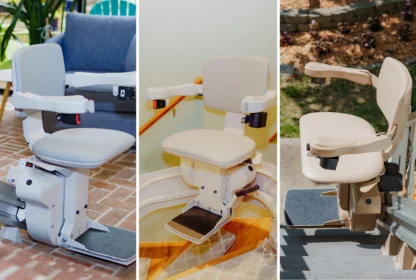
The Americans with Disabilities Act (ADA), introduced in 1990, made great strides in offering equality for those with disabilities, including requiring public spaces to be accessible to visitors of all abilities. However, the ADA does not apply to “religious organizations and entities controlled by religious organizations” (source). Despite the ADA has been in place for 28 years, churches and other places of worship are not always required to be handicapped accessible.
At the heart of any church, temple, or place of worship is a sense of community as these institutions are designed to serve as spaces where people can come together to celebrate a common belief. Even though they may not be required to accommodate visitors with disabilities, inclusion is important to fostering a sense of community. Such spaces should be proactive in making changes that allow easy access to visitors of all abilities. Also, while religious groups are not required to abide by ADA regulations, private organizations are. That means that if any other groups, such as childcare services or public support groups, want to use your facility to hold meetings or events, the accessibility laws may be applicable.
Unfortunately, churches and other worship spaces face unique challenges as many of them are located in older buildings. Some of these spaces can be especially difficult to retrofit for handicap access, from steep entryways to narrow staircases and multi-level worship halls.
As your local experts in mobility and accessibility solutions, 101 Mobility can help. We have assisted congregations across the country with stair lifts, platform lifts, ramps, grab bars, and other solutions to make all members feel safe and welcome, so you can trust that we have a solution for your place of worship.
Check out these Frequently Asked Questions (FAQs) for more information about making your church accessible, or contact us today to speak with an expert!
Frequently Asked Questions (FAQs)
1. Which products will work for our building?
The best solution will be something that makes your building accessible to visitors with a wide range of abilities while requiring minimal modifications to your existing structure. For outdoor staircases, this may mean a wheelchair ramp or a vertical platform lift. The size, layout, and location of your building’s staircase will determine which product will best fit your needs.
For indoor staircases, you may consider a vertical platform lift, stair lift, or even a ramp. Again, there are benefits and limitations to each of these solutions, so it is important to speak with an expert who can help determine the best solution for your building as well as your congregation’s needs.
101 Mobility will schedule a free consultation with one of our commercial mobility and accessibility experts in order to evaluate the area and learn more about your specific needs. Based on our consultation, we can review all possible solutions, and work with you to determine which would best suit your church or other places of worship.
2. What will it cost?
The cost can vary greatly depending on a few factors. First is which type of product you will need – will you be purchasing a ramp, stair lift, platform lift, or elevator? The second is which make and model of the product you will need. Within a product category, such as platform lifts, there is a range of manufacturers and lift styles. Which style you choose may come down to attributes such as style, features, and capacity.
3. Do I need commercial-rated equipment (and why is it more expensive)?
As a public facility, it is typically best to opt for commercially-rated equipment. Though ADA guidelines do not mandate that churches have any accessibility equipment in place, let alone commercial-grade equipment, many states and municipalities have local guidelines and ordinances in place governing the types of equipment that can be used in public spaces.
Even if your building is located in an area that does not require that your equipment be commercial-grade, you may still find that the additional cost is worthwhile to ensure that it is safe and accessible for all of your guests. In order to meet commercial-use guidelines, products typically have additional safety features and higher weight capacities than their residential counterparts. They are also built to be used more frequently, ensuring that they will stand up to years of heavy use. These benefits outweigh the small additional cost upfront to ensure that your church or other places of worship is and remains accessible to all of your guests.
4. What is the process?
Once you’ve identified that your church, temple, synagogue, or other places of worship has a need for an accessibility or mobility solution, reach out to a local mobility expert. The expert will visit with you during a free consultation in order to assess any trouble areas and learn more about your group and the people who visit. Based on this information, they will identify the best product or products for your needs.
We understand that there may be a number of decision-makers within your congregation. That’s why we’ll help you by meeting with other decision-makers or providing you with additional information that can be presented to the greater group. We want to be sure that your entire board has the opportunity to have their questions answered before moving forward with any changes to your building.
Since most religious groups are non-profit organizations, we also understand that funding your much-needed equipment can be difficult. We’ll help you identify creative ways to fund your building’s updates, including grants, loans, and charitable organizations.
Once you are ready to move forward, our experts will install your building’s new equipment, including pulling any applicable permits. After installation, our staff will educate your group about your new product, including proper use, safety features, and preventative maintenance requirements in order to keep it functioning like new for years to come.


